Search Results for Tag: Warming
Emperor Penguins in Distress
It has been a busy week for me here at DW, and unfortunately I was not able to do justice to the latest research on the likely fate of the Emperors down at the far south of the planet in the form of some interviews or a detailed article. Before I head off to a seminar tomorrow, I want to make sure the Ice Blog does not neglect our majestic friends in the Antarctic. Fortunately, Tim Radford from the Climate News Network has summed up the story: ” Loss of Antarctic sea ice through climate change threatens the emperor penguin’s habit to such an extent that scientists say it should now be made an iconic symbol – like China’s endangered giant panda – of the wildlife conservation movement” . Thanks Tim, Alex and all at the Climate News Network who keep us up-to-date on so many important climate issues. Thanks also to Dave Walsh for alerting to me to this study which, I am pleased to say, made its way into a lot of media outlets, if only briefly. Thanks also to Dave for the Belgian International Polar Foundation picture.
Allow me to quote at length from Tim’s summary:
“Global warming will this century take its toll of Antarctica’s most regal predator, the emperor penguin. There are now 45 colonies of this wonderful bird, but by 2100 the populations of two-thirds of these colonies will have fallen by half or more.
Stéphanie Jenouvrier, a biologist at the Woods Hole Oceanographic Institution in the US, and colleagues from France and the Netherlands report in Nature Climate Change that changes in the extent and thickness of sea ice will create serious problems for a flightless, streamlined , survival machine that can live and even breed at minus 40°C, trek across 120 kilometres of ice, and dive to depths of more than 500 metres. The researchers took all the data from 50 years of intensive observation of one colony in Terre Adélie and used climate models to project a future for the other 44 colonies known in the Antarctic.
Decisive factor
They found that the decisive factor in emperor penguin survival was the sea ice. If the seas warmed and there wasn’t enough ice, then that affected the levels of krill in the southern ocean, and therefore reduced the available prey. It also made the penguins more vulnerable to other predators. If the opposite happened and there was too much sea ice, then foraging trips took longer and penguin chicks were less likely to survive.
Aptenodytes forsteri – the Linnean name for the emperor – is not in trouble yet, and its numbers may even grow in the years up to 2050. But this growth won’t last, and decline is likely everywhere. Climate change has already begun to affect penguin species much further north, in Argentina, by taking toll of young chicks.
Endangered class
For different reasons, the average rise in global temperatures forecast by the Intergovernmental Panel on Climate Change (IPCC) could push the emperor into the endangered class.
“If sea ice declines at the rates projected by the IPCC climate models, and continues to influence emperor penguins as it did in the second half of the 20th century in Terre Adélie, at least two-thirds of the colonies are projected to have declined by greater than 50% from their current size by 2100,” Dr Jenouvrier said. “None of the colonies, even the southernmost locations in the Ross Sea, will provide a viable refuge by the end of the 21st century.”
The researchers end their paper by arguing that the emperor should – like the giant panda in China – become an icon for the conservation movement. They conclude: “We propose that the emperor penguin is fully deserving of Endangered status due to climate change, and can act as an iconic example of a new global conservation paradigm for species threatened by future climate change.” – Climate News Network.
– Yet another worrying piece of evidence on how human-made climate change is threatening the biodiversity of the planet, even in that “last bastion” of the Antarctic. The question is whether those iconic examples of species under threat from climate change like the penguins and their northern counterparts the polar bears are doomed to disappearance or whether their plight can really prompt the kind of lifestyle change and political and economic turnaround we need to put the brakes on climate change. I wish I could say I felt optimistic and had heard more than a lot of sympathetic “awwww”s in response to this latest distressing piece of penguin news.
See also:
West Antarctic Ice Sheet collapse unstoppable
Climate Risk to Icy East Antarctica
Ice Blog Post: Will the Antarctic share the Arctic’s Fate?
Keeping Greenland in focus
Two interesting publications relating to Greenland caught my eye over the past few days. But it has not proved easy to get them onto the international news agenda. Given the huge importance of the Greenland ice sheet to the planet’s future, this is frustrating to say the least. Fortunately there is the Ice Blog.
The first research relates to a study about the role of ash from fires in bringing about large-scale surface melting. The other predicts Greenland will be a far greater contributor to sea rise than expected.
Let me start with the latter, published in Nature Geoscience. Scientists from the University of California – Irvine and NASA glaciologists have found previously uncharted long deep valleys under the Greenland Ice Sheet. Since these bedrock canyons are well below sea level, they are much more vulnerable to warm ocean waters than previously thought. When warmer Atlantic water hits the fronts of hundreds of glaciers, the edges will erode much further than previously assumed, releasing far greater amounts of water.
Ice melt from the subcontinent has already accelerated, as warmer marine currents have migrated north, the authors say. Older models predicted that once higher ground was reached in a few years, the ocean-induced melting would halt. Greenland’s frozen mass would stop shrinking, and its effect on higher sea waters would be curtailed.
“That turns out to be incorrect. The glaciers of Greenland are likely to retreat faster and farther inland than anticipated – and for much longer – according to this very different topography we’ve discovered beneath the ice,” says lead author Mathieu Morlighem, a UC Irvine associate project scientist, on the university website. “This has major implications, because the glacier melt will contribute much more to rising seas around the globe.”
To obtain the results, Morlighem developed what he says is a breakthrough method that for the first time offers a comprehensive view of Greenland’s entire periphery. It’s nearly impossible to accurately survey at ground level the subcontinent’s rugged, rocky subsurface, which descends as much as 3 miles beneath the thick ice cap.
Since the 1970s, limited ice thickness data has been collected via radar pinging of the boundary between the ice and the bedrock. Along the coastline, though, rough surface ice and pockets of water cluttered the radar sounding, so large swaths of the bed remained invisible.
Measurements of Greenland’s topography have tripled since 2009, thanks to NASA Operation IceBridge flights. But Morlighem says he quickly realized that while that data provided a fuller picture than the earlier radar readings, there were still major gaps between the flight lines.
To reveal the full subterranean landscape, he designed a novel “mass conservation algorithm” that combined the previous ice thickness measurements with information on the velocity and direction of its movement and estimates of snowfall and surface melt.
The difference was dramatic, says Morlighem. What appeared to be shallow glaciers at the very edges of Greenland are actually long, deep fingers stretching more than 100 kilometers (almost 65 miles) inland.
“We anticipate that these results will have a profound and transforming impact on computer models of ice sheet evolution in Greenland in a warming climate,” the researchers conclude.
“Operation IceBridge vastly improved our knowledge of bed topography beneath the Greenland Ice Sheet,” said co-author Eric Rignot of UC Irvine and NASA’s Jet Propulsion Laboratory. “This new study takes a quantum leap at filling the remaining, critical data gaps on the map.”
Other co-authors are Jeremie Mouginot of UC Irvine and Helene Seroussi and Eric Larour of JPL. Funding was provided by NASA.
This is the same team that reported on accelerated glacial melt in West Antarctica, as discussed in an earlier Ice Blog post. Together, the papers “suggest that the globe’s ice sheets will contribute far more to sea level rise than current projections show,” Rignot said.
Indeed. These scientists are telling us the IPCC forecasts were way too low. This could have huge consequences for coastal communities all around the globe.
Unfortunately, a lot of people (even those you would expect to know better) tend to mix up “Arctic” and “Antarctic”. It all goes into the category of “melting ice”, and they think they have heard it all before. What they still don’t realize is that this is something that concerns us all, and that these two polar areas are of huge significance to the world climate as a whole and global sea level. When those two Antarctic studies were released, there was a flurry of news coverage. The challenge for us journalists is how to follow this up and stop the attention curve from dropping.
The other interesting piece of recent Greenland research was conducted by the Dartmouth College Thayer School of Engineering and the Desert Research Institute and reported in the Proceedings of the National Academy of
Sciences. It concludes that ash from Northern hemisphere forest fires combined with rising temperatures to cause large-scale surface melting of the Greenland ice sheet in 1889 and 2012.
The researchers say their findings contradict conventional thinking that the melting was driven by warming alone.
The findings suggest that continued climate change will result in nearly annual widespread melting of the ice sheet’s surface by the year 2100.
Melting in the dry snow region does not contribute to sea level rise, but when the meltwater percolates into the snowpack and refreezes, the surface is less reflective. This reduces the albedo.
Let me give the (almost) last word to the study’s lead author Kaitlin Keegan.
“With both the frequency of forest fires and warmer temperatures predicted to increase with climate change, widespread melt events are likely to happen much more frequently in the future”.
It figures.
Will Antarctic share Arctic’s fate?
While the Arctic is melting twice as fast as the rest of the planet, and protests continue against the race for oil at huge risk to the sensitive environment, the icy regions around the south pole were long considered immune to climate change. But melting glaciers on the Antarctic Peninsula in recent years sparked doubts in the scientific community about just how stable the western region of Antarctica really is. Earlier this year, I wrote an article on the irreversible melt of the Pine Island glacier on western Antarctica. The huge iceberg that broke off last November has been in the news again, heading for the open sea.
Only the huge icy vastness of Eastern Antarctica still appeared to be safe from the perils of a warming climate. Now experts from Germany’s Potsdam Institute for Climate Impact Research (PIK) have published findings indicating that this too might no longer be the case. In a study published in “Nature Climate Change“, they write that the melting of just a small volume of ice on the East Antarctic coast could ultimately trigger a discharge of ice into the ocean which would result in unstoppable sea-level rise. They are talking about tomorrow or the next decade. Still, the prospect of more irreversible thawing in the Antarctic is a very worrying one.
“Previously, only the West Antarctic was thought to be unstable. Now we know that the eastern region, which is ten times bigger, could also be at risk”, says Anders Levermann, co-author of the study. The findings are based on computer simulations which make use of new, improved data from the ground beneath the ice sheet.PIK scientist Levermann was one of the lead authors of the sea-level section in the latest IPCC report.
“The Wilkes Basin in East Antarctic is like a bottle that is tilted”, says Matthias Mengel, lead author of the new study.”If you take out the cork, the contents will spill out”. At the moment, the “cork” is formed by a rim of ice at the coast. If that were to melt, the huge quantities of ice it holds back could shift and flow into the ocean, raising sea levels by three to four meters. Although air temperatures over Antarctica are still very low, warmer ocean currents could cause the ice along the coast to melt.
So far, there are no signs of warmer water of this sort heading for the Wilkes Basin. Some simulations suggest though that the conditions necessary for the “cork” to melt could arise within the next 200 years. Even then, the scientists say it would take around 2000 years for sea level to rise by one meter.
According to the simulations, it would take 5,000 to 10,000 years for all the ice in the affected region to melt completely. “But once this has started, the discharge will continue non-stop until the whole basin is empty”, says Mengel. “This is the basic problem here. By continuing to emit more and more greenhouse gases, we could well be triggering reactions today that we will not be able to stop in the future. ” Indeed.
The IPCC report predicts a global sea-level rise of up to 16 centimeters this century. As this could already have devastating impacts on many coastal areas around the globe, any additional factor is of key importance to the calculations. “We have presumably overestimated the stability of East Antarctica”, says Levermann. Even the slightest further increase in sea level could aggravate flooding risks for coastal cities like New York, Tokyo or Mumbai.
At the moment, the largest contribution to Antarctic ice loss and rising sea levels comes from the Pine-Island glacier in West Antarctica. As I mentioned at the start, a huge iceberg, which broke off from the glacier last year, is currently floating into the open waters of the Southern Ocean. French glaciologist Gael Durand from Grenoble University told me in an interview the huge glacier had already reached a point where its continued melting is irreversible, regardless of air temperature or ocean conditions.
Why melting Arctic ice leaves us cold!
Since I attended a workshop on “Creating a Climate for Change” in Tromso in January, I have been thinking a lot about the psychological reasons why things are not moving forward on climate change. Although scientific knowledge is growing all the time, public perception of the need for action has not kept pace. Even in regions of the Arctic where climate change is very visible, a lot of people seem to be unwilling to take it on board. Of course there are people who will benefit to some extent. But the danger of a warming world for future generations and the environment is hard to avoid. Yet there is what you could all collective inaction. Is it all in the mind? I touched on this briefly in a post from Tromso, but feel it is important enough to come back to in some more detail here.
In connection with climate change, the word “denial” is highly emotionally charged. Her book entitled “Living in Denial: Climate Change, Emotions, and Everyday Life” brought American sociologist Kari Norgaard storms of hate mail from right-wing climate skeptics. Yet the academic from the University of Oregon is not concerned with this minority group.
“I think it is a very disingenuous debate that has been manufactured by political interests who stand to lose as the economy shifts away from fossil fuels. What they’re doing is trying to make it sound like there is a debate – but actually there is no debate”, Kari told me in an interview. What she wants to understand is why the vast majority of people who do not dispute the existence of human-induced climate change still fail to translate that knowledge into action in their own lives.
“How is it possible that we have so much knowledge about the urgency of climate change, yet when you look around, it seems that either nobody knows or nobody cares?”. Norgaard sees an “incredible disconnect between the moral, social and environmental crisis of climate change and the lack of a widespread sense of a need for urgent action.” Humans, says Norgaard, are “not getting it” and “carrying on regardless”.
Refusing to accept the obvious?
The American researcher spent ten months studying a community in northern Norway, a country where media literacy, political participation and climate awareness are high. The winter she spent there was unusually warm and the snow came two months later than usual, causing problems for the community’s two main revenue sources farming and tourism. Yet Norgaard observed that the phenomenon of climate change was “invisible in social or political life”. Although stories in the media linked the warm winter explicitly to global warming, residents did not react by contacting politicians or cutting down on fossil fuels. Norgaard attributes this lack of response to what she calls “socially organized denial”: although people are informed about the findings of climate science, this knowledge remains disconnected from political, social, and private life. She sees this as symbolic of how citizens of wealthier, industrialized countries are responding to global warming. In her home county the USA, regions are already experiencing climate impacts with economic consequences. Yet people do not want to accept that it could have something to do with their lifestyle and require unpleasant action.
“People have a real fear about what it means for the world and their future. Then a sense of guilt comes up because they realize that our high quality of life through our use of fossil fuels is directly linked to this problem. Then there is a sense of helplessness, because it feels so large and we see the lack of political response.”
People prefer, it seems, to live as though they did not have the worrying evidence of climate change. Norgaard compares this behaviour to people’s ignoring the holocaust or the dropping of the atomic bomb during World War II: She thinks we are trying to protect ourselves by avoiding unpleasant facts and the need to do something about them.
The greatest communication failure of all time?
Per Espen Stoknes is a psychologist at the Center for Climate Strategy of the Norwegian Business Institute NBI. He says the communication of climate science has failed to take account of psychological defence mechanisms of the sort Norgaard describes. “For a long time it was hoped that just the facts would be sufficient. But there are psychological barriers which stop people taking to heart what climate science is telling us, and these have been underestimated”, he told me in an interview.
Stoknes says people perceive climate change as something distant, in time and place. An IPCC (intergovernmental Panel on Climate Change) forecast for 2100 seems a long way away. Melting sea ice or sea level rise in places like Bangladesh or the Maldives seem geographically very remote.
Paradoxically, the better the facts on climate change become, the less people seem to care. Stoknes quotes surveys going back to 1989 in Norway which show a decrease in people’s concern about the greenhouse effect and climate change.”Only four in ten now see it as a problem”.
Another interesting statistic Stoknes quotes shows the public has the impression only 55 percent of climate scientists agree on global warming. In reality, the figure is 97%.Getting the message about climate change across is the “greatest communication failure of all time”, says Stoknes. He says scientists need to lecture people less and engage more in dialogue and discussion. Media coverage also plays a role: “We know about 85 percent of all the media reports about climate have been framed as doom and disaster. We know this gives people an aversion and leads to avoidance behaviour. We stop wanting to hear about the issue”.
This would appear to fit with a downward slide in climate coverage around the globe, says Elisabeth Eide from the University of Bergen, author of various works on climate change in the media. She refers to “climate fatigue” in society at large and in journalists in particular.
How to motivate people to combat climate change?
If these researchers are correct and the lack of climate action is mainly psychologically motivated, the problem requires psychological solutions. Stoknes says we have to cross the “doom and disaster barrier” and point the way forward. Norgaard too argues for more positive examples and indications of what we could do to change things.”.
Psychologist Stoknes stresses the power of social norms to change behaviour: He suggests campaigns that make people compete with their peers – neighbours, other towns, friends, relatives, at being climate-conscious. He reports the success of an app where people can record and compare how much energy they have used. Another possibility is to make “greener” options the default in all aspects of daily life. “If the normal way a printer works is to use both sides of the paper, for instance, people will do that. Not if they have to change a setting” says Stoknes. A mind-shift away from portraying climate change as a paralysing threat towards stressing practical behaviour that would change the situation could avoid triggering what the experts call “the emotional need for denial”. Any thoughts on that?
Climate change back on the agenda?
Trawling the media for climate-related stories over the weekend, I began to see some signs that the message might be getting across after all. I had just put the finishing touches to my story on “Why we don’t want to hear about climate change“, based on interviews with sociologist Kari Marie Norgaard from the University of Oregon and psychologist Per Stoknes from the Norwegian Business school, when I heard US Secretary of State John Kerry’s announcement that the USA and China would be cooperating and exchanging data in the run-up to the 2015 Paris climate talks, where a new climate deal is supposed to be agreed. I found myself feeling just a little bit more optimistic. If these two key players really put climate protection into action, maybe we will be able to get somewhere. A report on a study by the Chinese government on the disastrous air pollution in Beijing is not happy reading, but gives grounds to assume the Chinese government has to be serious about taking emissions in hand.
Arctic ambassador – a sign of the times?
Another announcement by the US Sec of State leaves me with mixed feelings. There is going to be a US ambassador for the Arctic. On the one hand, it is always good to see the Arctic getting attention. On the other hand, the motivation does not make me jump for joy. An item from the news agency AFP writes of “a region increasingly coveted by several countries for its oil and other raw materials”. Indeed. That is the worrying bit. In case you missed it, (the Arctic announcement did not get huge coverage), Kerry said in his statement:
“The Arctic region is the last global frontier and a region with enormous and growing geostrategic, economic, climate, environment and national security implications for the United States and the world…President Obama and I are committed to elevating our attention and effort to keep up with the opportunities and consequences presented by the Arctic’s rapid transformation – a very rare convergence of almost every national priority in the most rapidly-changing region on the face of the Earth”. It is good to see climate and environment get a mention at least.
A “Stern” warning
The Guardian had a guest article by Nicholas Stern, the author of that famous Stern Report on the economics of climate change back in 2006 (yes, it really is that long ago).The background to this, of course, is the wild weather in the UK. Now I do not wish that kind of weather on anyone, but in terms of drawing attention to climate change it has certainly been very important. Stern writes “The record rainfall and storm surges that have brought flooding across the UK are a clear sign that we are already experiencing the impacts of climate change”. He makes a clear case for linking the two. He also brings in the other extreme weather around the globe, including Australia, Argentina and Brazil and the devastating typhoon Haiyan in the Philippines last year. Stern has clear advice for the politicians:
“This is a pattern of global change that it would be very unwise to ignore.” Stern says the risks are even bigger than when he wrote the 2006 report. “Since then, annual greenhaouse gas emissions have increased steeply and some of the impacts, such as the decline of Arctic sea ice, have started to happen much more quickly.”
I hope a lot of decision-makers and influential business people have read or will still read Stern’s article. He calls for rapid action and investment. He has a clear message for the European Union, currently not the most popular international organisation with the British government. “The UK whould work with the rest of the EU to create a unified and much better functioning energy market and power grid structure. ‘this would also increase energy security, lower costs and reduce emissions. What better was is there to bring Europe together?” Other measures recommended would be to implement a “strong price on greenhouse gas pollution across the economy”. This, remember, is a renowned economist, not an environmental campaigner. He also warns against the temptation to cut overseas aid to fund adaptation to climate change. “It would be deeply immoral to penalise the 1.2 billion people around the world who libve in extreme poverty…In fact, the UK should be increasing aid to poor countries to help them develop economically in a climate that is becoming more hostile largely because of past emissions by rich countries”- Yes. Yes. Yes.
Don’t let the weather distract from your climate awareness!
The other piece of writing which inspired me over the weekend was in the ImaGeo blog by Tom Yulsman: “Move over polar vortex“. He looks at the new analysis produced by the UK’s Met Office:
“If a new scientific analysis is correct, the repeated bouts of extreme weather on either side of the Atlantic are indeed unusual – and both are manifestations of a chain of climatic teleconnections that reach half way around the globe and all the way to the tropics”.
There is a lot of talk in this piece of whether the polar vortex is weak (as discussed in my article More Arctic Weather in a Warming World?) Or actually “particularly intense”. I would recommend you read Tom’s blog for yourselves for the details and his views. But the insight I would leave you with here as “food for thought” is where he quotes a paper in the journal Science.
“They conclude that the recent discourse focusing on the possible connections between winter weather and climate change distracts from the bigger issue: that is, regardless of extreme winter weather, climate change is undoubtedly real, and that harsh winters are not what we really need to be concerned about going forward as the climate continues to change”.
People love to talk about the weather. But if we use every instance of unusual weather to question the overall trend of global warming, with all the complex effects that has on our climate, winds, oceans etc, we run the risk of losing a necessary sense of urgency when it comes to reducing emissions. I am reminded, as I often am, of a young climate ambassador from the Netherlands during a fact-finding trip to Alaska in 2008. As we stood at the Visitor’s Centre for a glacier which is now no longer visible from that spot because it has retreated so far, he said that just brought home to him how “everything is connected”. Our everyday lifestyle in the industrialised world is melting the Arctic ice – and that, in turn, is contributing to the changing climate patterns which can radically alter the planet.



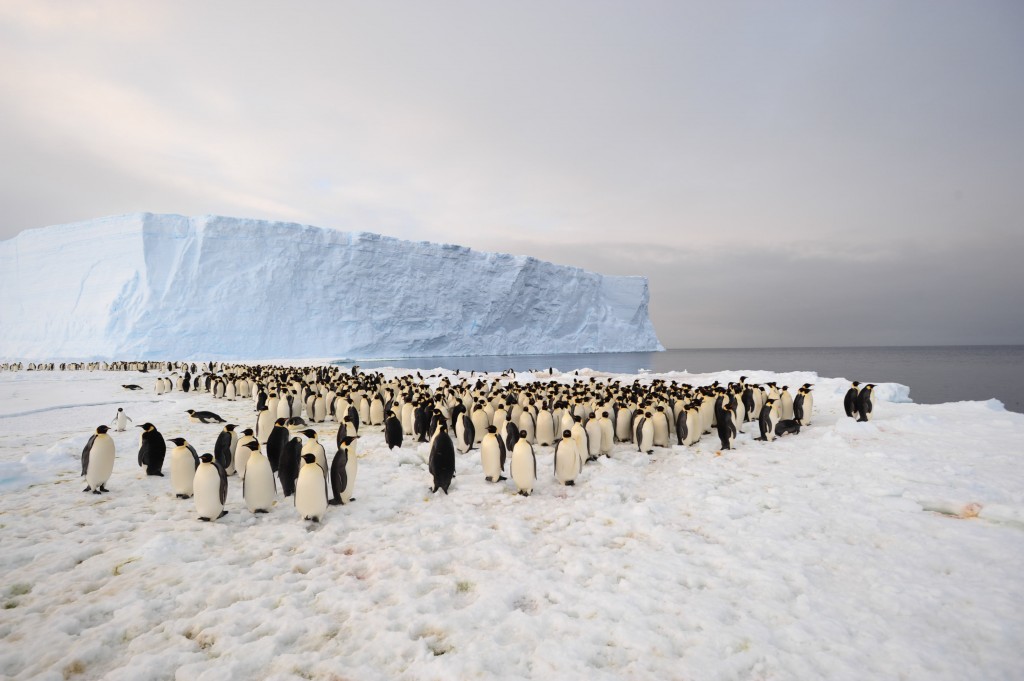
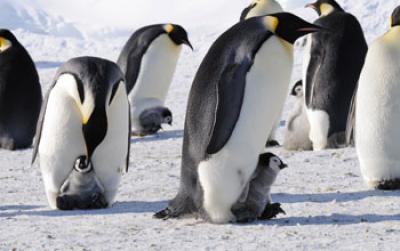

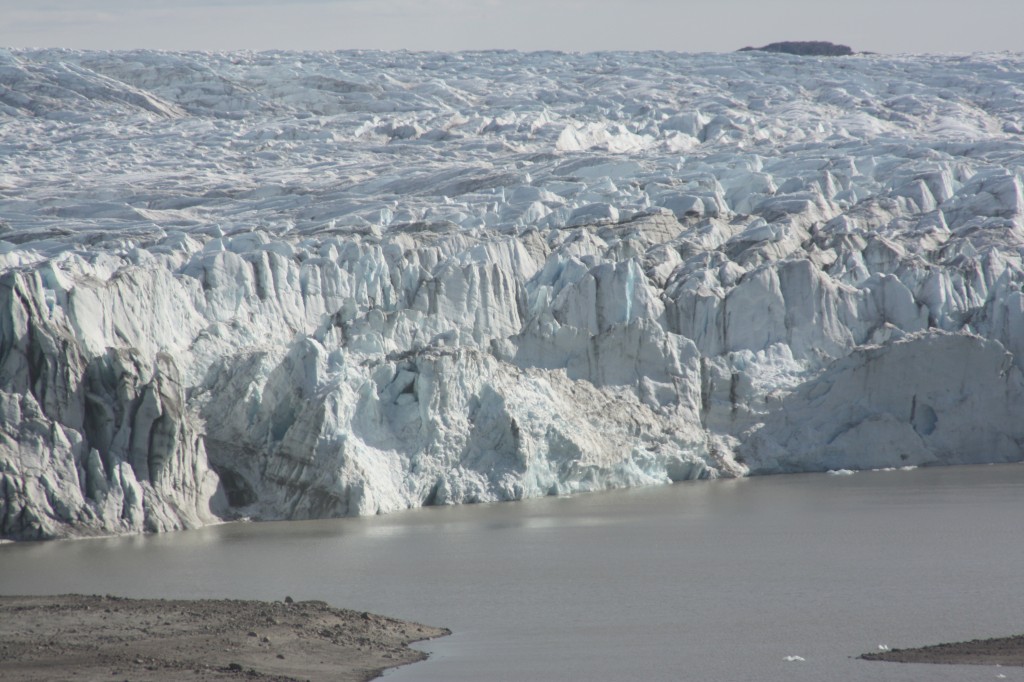
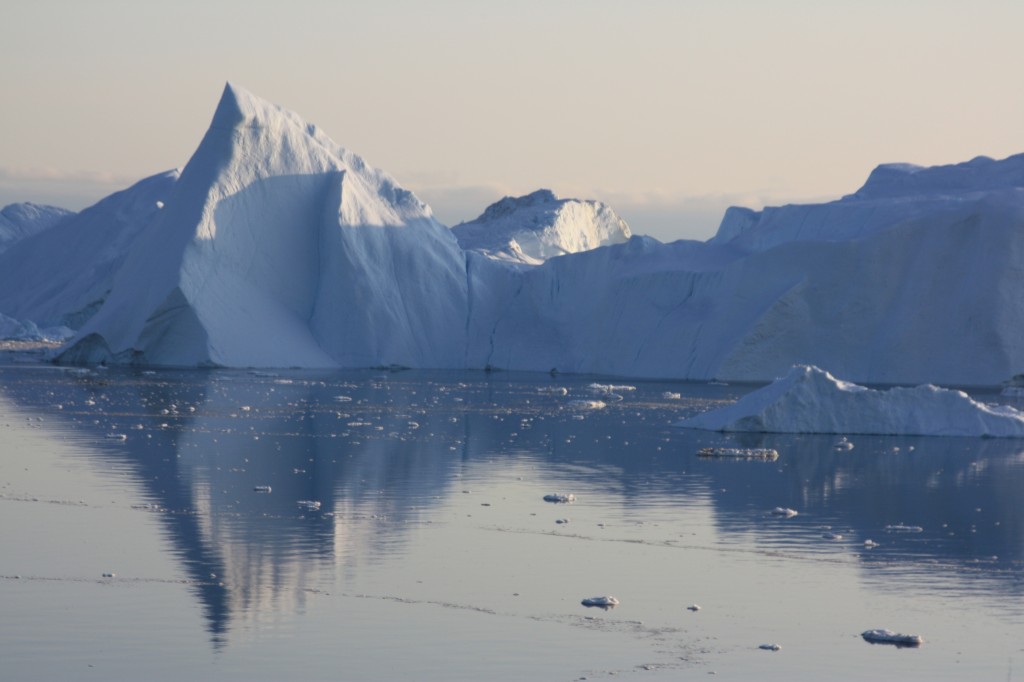
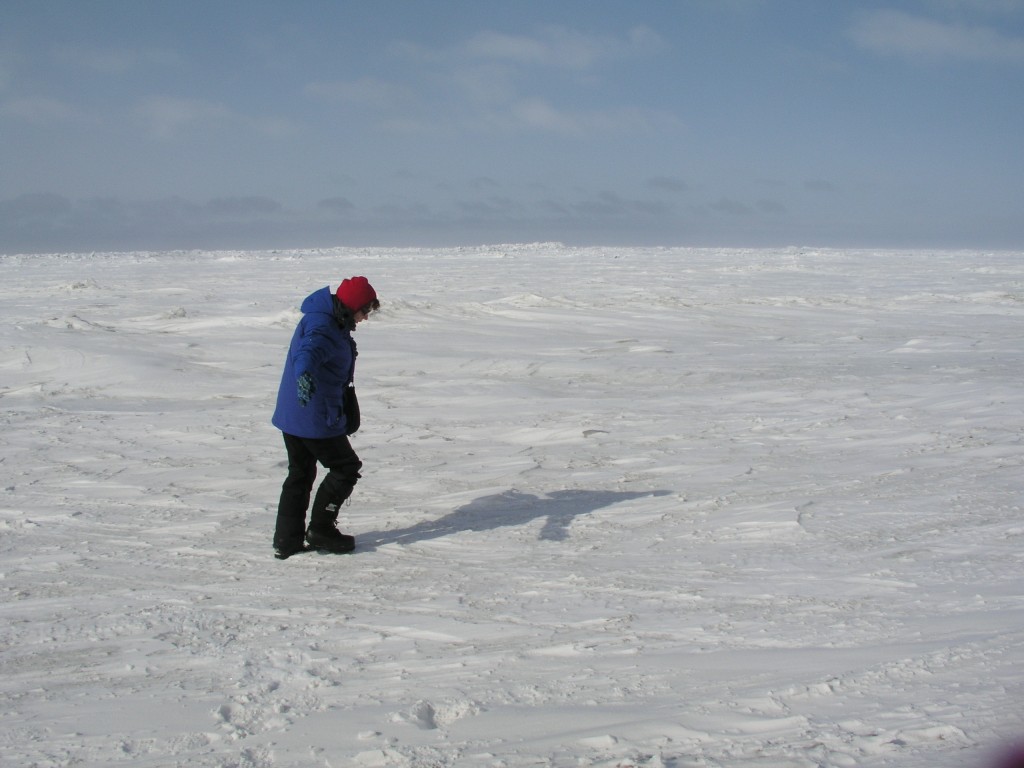


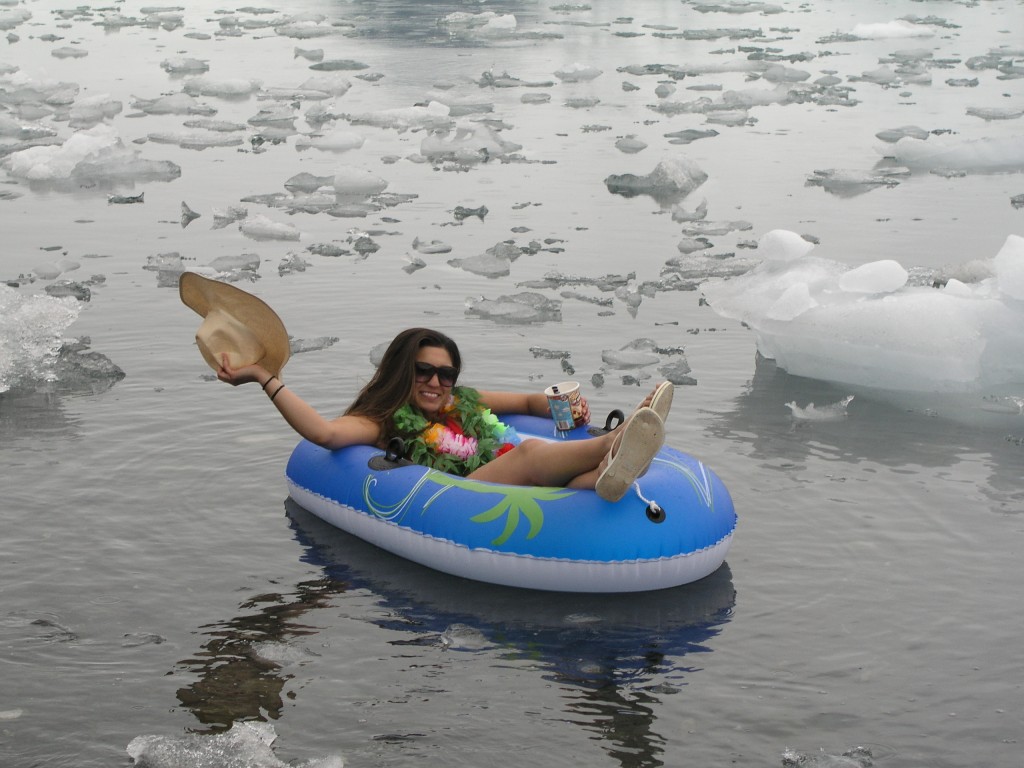
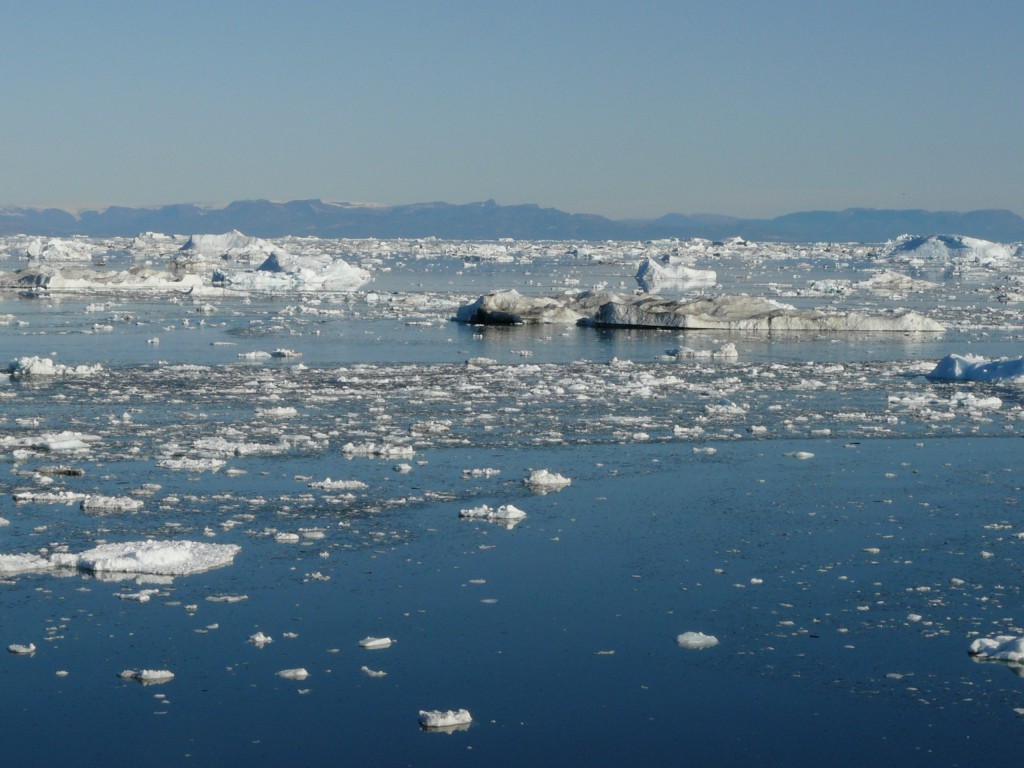

![6418.3[1]](http://blogs.dw.com/ice/files/6418.31.jpg)
















Feedback